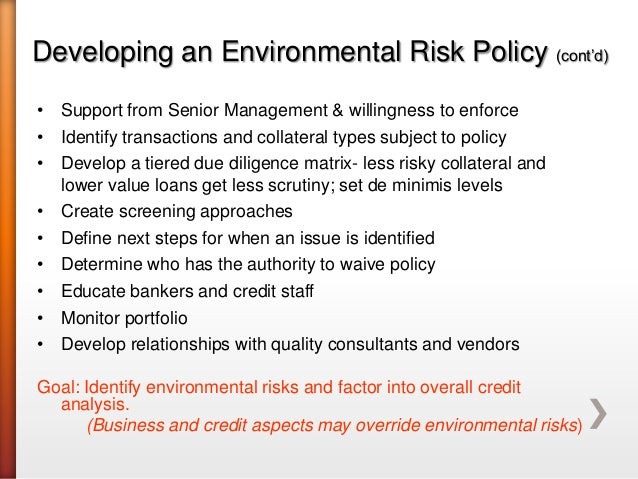
Image source: https://image.slidesharecdn.com/lenderwebinar102913slidesapm-131029164345-phpapp02/95/learn-from-the-experts-critical-elements-of-effective-environmental-policies-28-638.jpg?cb=1383065083
An Environmental Site Assessment (ESA) is a report prepared for a real estate holding which identifies potential or existing environmental contamination liabilities. It typically addresses both the underlying land as well as physical improvements to the property. When conducting ESA, it is the phase 1 ESA that you need to undergo first.
Phase 1 ESA tells people what lies beneath. Beneath the surface of the subject property as Phase 1 inspect the land. Scrutiny of the land includes examination of potential soil contamination, groundwater quality, surface water quality and sometimes issues related to hazardous substance uptake by biota.
Phase I Environmental Site Assessment reports are normally performed for commercial properties, residential developments, agricultural properties and industrial properties. They are usually required by banks for real estate purchase loans or refinancing. Even if a lender is not involved in the real estate transaction, a Phase I report is recommended as protection from any future environmentally-related liability after taking title to the property.
A property condition assessment also includes a review of local governmental documents regarding the site to determine what the past usage of the site was, along with extensive document review of the surrounding area. It also entails a very involved and detailed site visit by a qualified professional. In addition there is data base information that is gathered and reviewed of the surrounding vicinity to determine if there is a potential risk from an environmental stand point in the immediate area.
These potential risks can be anything from a past gas station on or near the site that might have contaminated the ground water to there having been a dry cleaner on the site that might have spilled chemicals into the ground. There could have been past dumping on the site or an auto repair that did not handle the oils properly, lead in the paint, asbestos, and on and on. Industrial hygiene consultants can detect all of that.
The Phase I ESA is generally considered the first step in the process of environmental due diligence. Standards for performing a Phase I site assessment have been promulgated by the US EPA and are based in part on ASTM in Standard E1527-05. If a site is considered contaminated base on results of Phase 1 ESA, A Phase II Environmental Site Assessment may be conducted, ASTM test E1903, a more detailed investigation involving chemical analysis for hazardous substances and/or petroleum hydrocarbons. If contaminants are already found and that require removal, A Phase 3 ESA will soon be conducted. This includes remediation of the site.
In the United States of America demand increased dramatically for this type of study. Mainly because property holders already realized how important it is for their property to undergo ESA before anything else.
In looking for an environmental engineering service to conduct ESA in to your site, remember that you need to find professionals that have the expertise and experience on handling it. Environmental Consultants should have a thorough understanding of environmental laws and practices so that they can quickly provide turnaround on Phase I & Phase II Environmental Site Assessments.